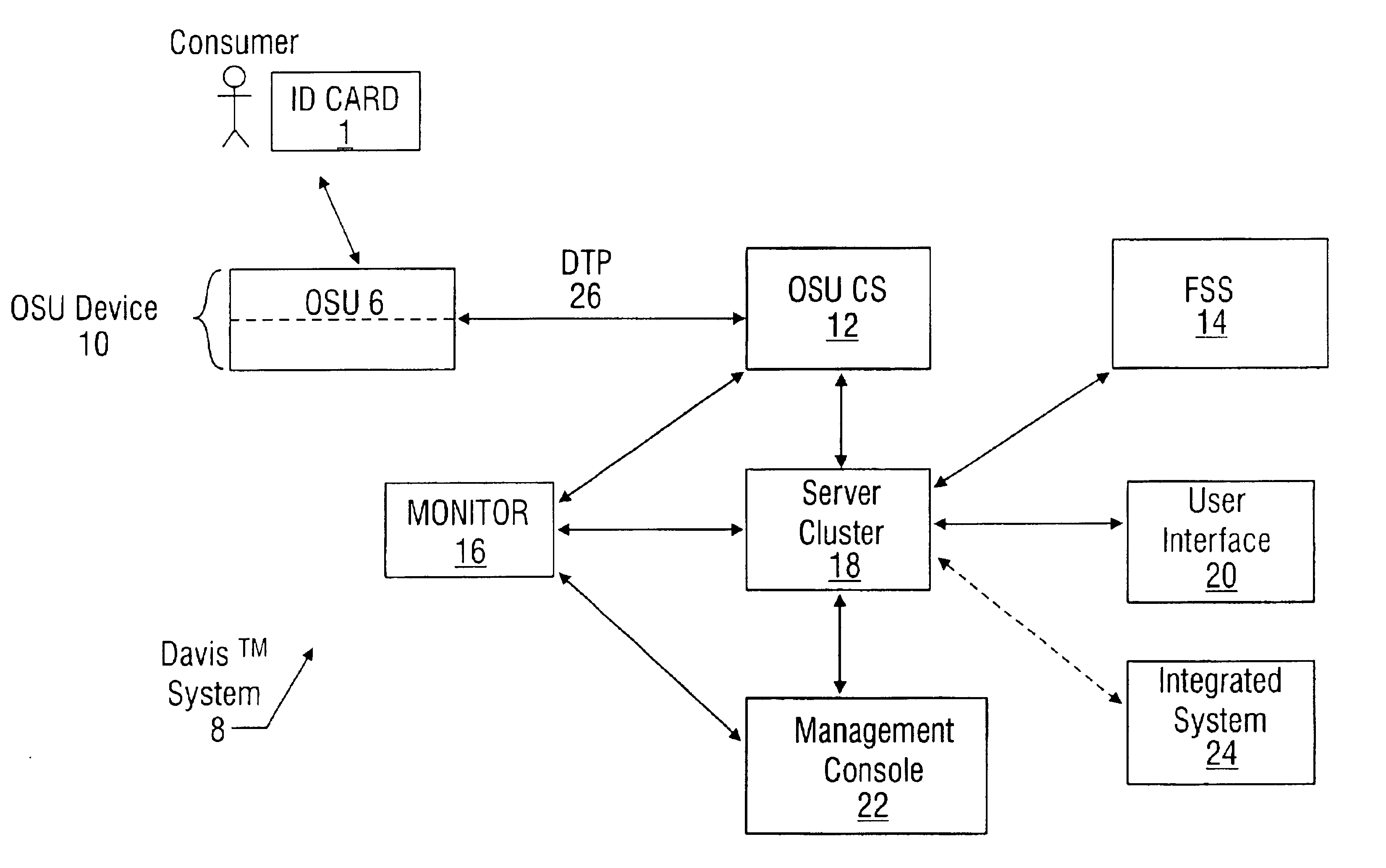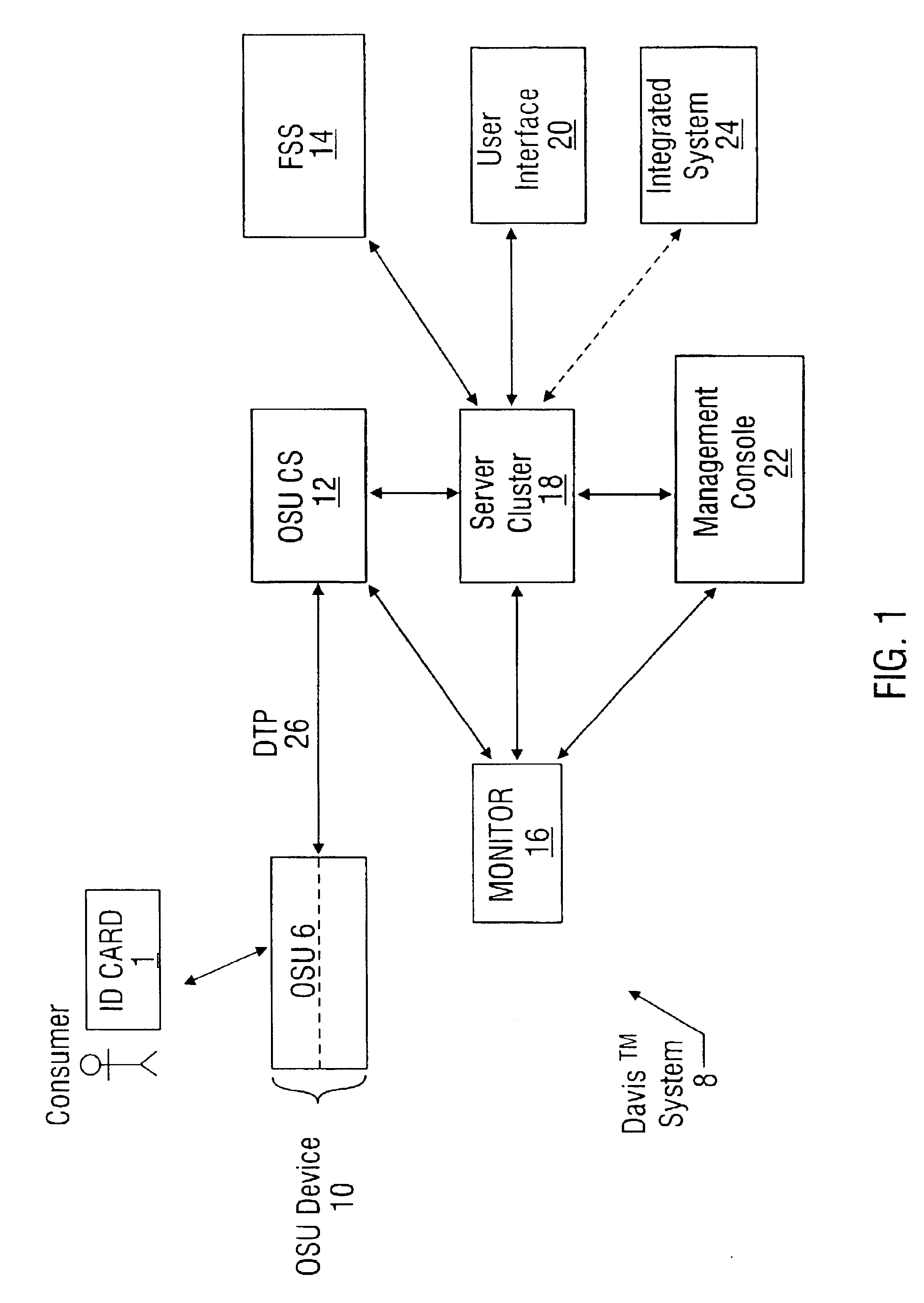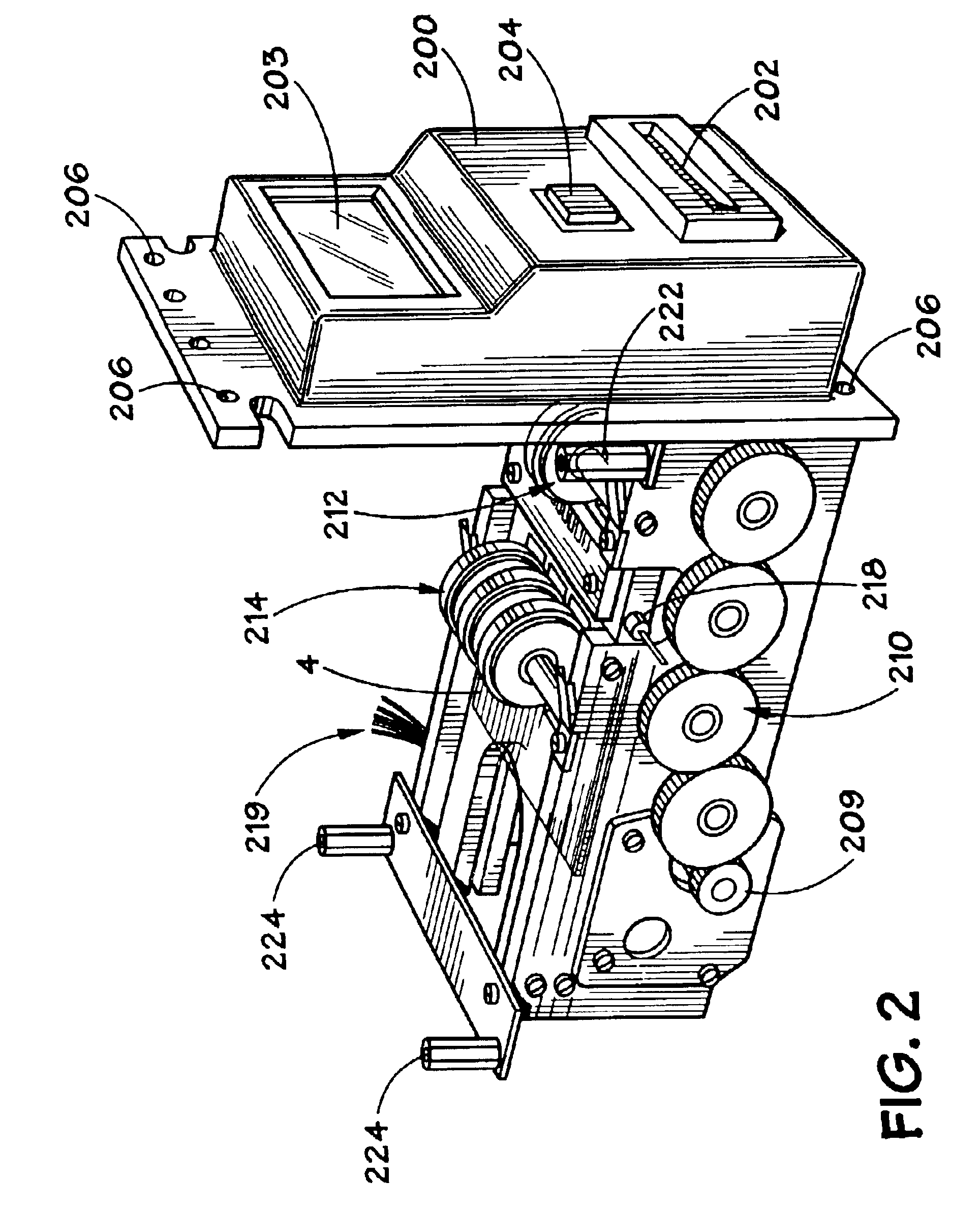System for vending products and services using an identification card and associated methods
a technology for vending products and services, applied in the field of system for vending products or services, can solve the problems of limited utility of credit cards, inability to carry out both forms of identification, so as to facilitate the analysis of id cards, enhance the performance of the system, and configure and/or update the functionality of the system
- Summary
- Abstract
- Description
- Claims
- Application Information
AI Technical Summary
Benefits of technology
Problems solved by technology
Method used
Image
Examples
Embodiment Construction
In the disclosure that follows, in the interest of clarity, not all features of actual implementations are described. It will of course be appreciated that in the development of any such actual implementation, as in any such project, numerous engineering and design decisions must be made to achieve the developers' specific goals (e.g., compliance with technical- and business-related constraints), which will vary from one implementation to another. Moreover, attention will necessarily be paid to proper engineering and design practices for the environment in question. It will be appreciated that such a development effort might be complex and time-consuming, but would nevertheless be a routine undertaking for those of skill in the art given the disclosure in the present specification.
I. System Overview
Disclosed herein is a transactional, multi-tiered, networked information system, referred to as the Davis™ system. (“Davis” is an acronym for the “Detsky Age Verification Information Syst...
PUM
 Login to View More
Login to View More Abstract
Description
Claims
Application Information
 Login to View More
Login to View More - R&D
- Intellectual Property
- Life Sciences
- Materials
- Tech Scout
- Unparalleled Data Quality
- Higher Quality Content
- 60% Fewer Hallucinations
Browse by: Latest US Patents, China's latest patents, Technical Efficacy Thesaurus, Application Domain, Technology Topic, Popular Technical Reports.
© 2025 PatSnap. All rights reserved.Legal|Privacy policy|Modern Slavery Act Transparency Statement|Sitemap|About US| Contact US: help@patsnap.com



